Delicious Gyu Donburi Recipe for Meat Lovers
Welcome to my Gyu Donburi recipe! If you’re a fan of Japanese cuisine or have tried this classic dish before, you’re in for a treat. For those who haven’t heard of Gyu Donburi, let me introduce you to this flavor-packed dish.
Gyu Donburi, also known as beef rice bowl, is a popular Japanese dish made with thinly sliced beef and onions simmered in a savory-sweet dashi broth, served over a bed of cooked rice. The name “Gyu Donburi” literally means beef rice bowl and it is a bowl-type dish called “donburi” made with thinly shaved beef.
This dish is a staple in Japanese cuisine and is often found in casual dining restaurants or even in convenience stores. It’s a quick and easy meal that satisfies your hunger and taste buds. The combination of tender beef, sweet onions, and savory broth with the fluffy white rice is simply irresistible.
In this recipe, I’ll guide you through the steps to make a delicious Gyu Donburi right in your own kitchen. Trust me, once you try this dish, it will become a regular in your meal rotation. Let’s get started!
Why You’ll Love This Recipe
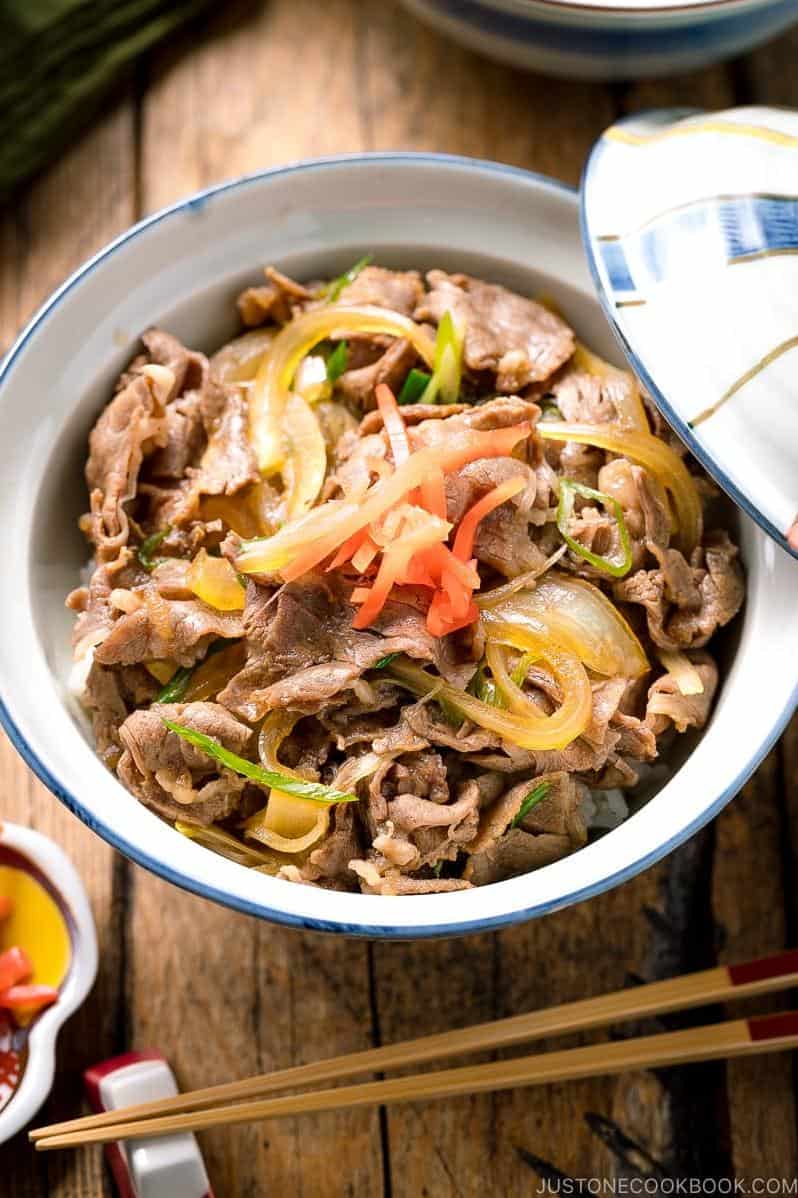
If you’re a fan of Japanese cuisine, you’ll definitely love this Gyu Donburi recipe. This dish is an incredibly delicious and satisfying meal that will leave you wanting more. Here are some reasons why you’ll love this recipe:
Firstly, the combination of thinly sliced sirloin beef and sweet onions simmered in a savory sweet dashi broth is simply irresistible. The beef is cooked to perfection and the onions add a sweet and tangy flavor that complements the beef and rice perfectly.
Secondly, this dish is incredibly easy to make. With just a few simple ingredients and a little bit of time, you can make a restaurant-quality meal right at home. Plus, the recipe is very customizable, so you can adjust the flavors to your liking.
Thirdly, this dish is very versatile. It can be served as a main course or as a side dish, and it pairs well with a variety of other Japanese dishes. Additionally, it’s a great dish to make for a crowd, as it can easily be adapted to feed a larger group.
Finally, this dish is a great way to switch up your usual rice bowl routine. If you’re tired of the same old rice and protein combination, this dish is the perfect way to add some variety to your meals.
All in all, the Gyu Donburi recipe is a must-try for anyone who loves Japanese cuisine. Its delicious flavor, simplicity, versatility, and uniqueness make it a standout dish that you won’t want to miss out on.
Ingredient List
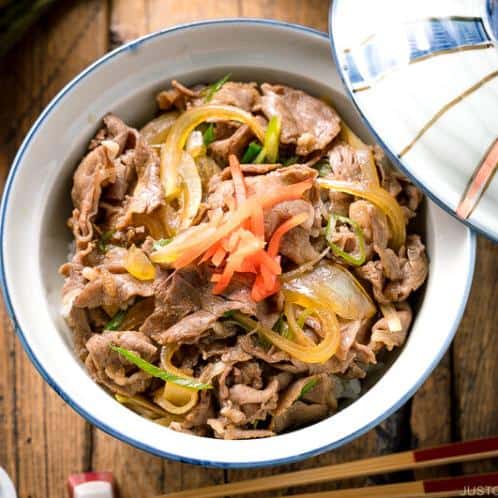
-
Sirloin Beef: 7 ounces steak, thinly sliced. The key to this dish is the quality of beef. Choose a good cut of beef to ensure tenderness and flavor.
-
Onion: 2 medium onions, sliced. The onions are simmered with the beef to create a savory and sweet flavor that complements the dish.
-
Low Sodium Beef Broth: 1 1/4 cups. Use low sodium beef broth to control the saltiness of the dish.
-
Soy Sauce: 2 tablespoons soy sauce. Use low sodium soy sauce to control the saltiness of the dish.
-
Mirin: 2 tablespoons mirin. Mirin is a sweet Japanese rice wine that adds a mild sweetness to the dish.
-
Sake: 2 tablespoons sake. Sake is a Japanese rice wine that adds flavor to the dish.
-
Sugar: 1 1/2 tablespoons sugar. Sugar balances the salty and savory flavors of the dish.
-
Eggs: 1-2 eggs, optional topping. A soft-boiled egg is a popular topping for gyu donburi.
-
White Rice: Cooked white rice, to serve. The beef and onions are served over a bed of white rice.
Notes:
-
Gyudon is a Japanese dish consisting of thinly sliced beef that is simmered in a sweet and savory broth made of dashi, soy sauce, mirin, and sugar. It is served over a bowl of hot rice, and often topped with a soft-boiled egg and sliced green onions.
-
The word “gyudon” literally means “beef bowl,” and is a type of donburi, which is a rice bowl dish made with thinly shaved meat, seafood, or vegetables.
-
Substitution: If you do not consume alcohol, you can substitute sake with Chinese Shaoxing wine or dry sherry.
The Recipe How-To
Now, let’s dive into the most exciting part – the recipe how-to! This gyu donburi beef bowl recipe is easy to follow and doesn’t require advanced cooking skills.
Ingredients:
- 1 small onion, thinly sliced
- 1/4 cup low-sodium beef broth
- 2 tablespoons soy sauce
- 2 tablespoons mirin
- 1 tablespoon sake
- 1 tablespoon sugar
- 7 ounces thinly sliced sirloin beef
- 1-2 eggs (optional)
- Cooked white rice
- Green onions, sliced (for garnish)
Instructions:
-
In a medium saucepan, bring the sliced onion, beef broth, soy sauce, mirin, sake, and sugar to a boil over medium heat.
-
Reduce the heat and let it simmer for 2-3 minutes until the onions are soft and the sauce has thickened.
-
Add the thinly sliced beef into the saucepan and let it cook for 1-2 minutes until it’s no longer pink.
-
If you want to add eggs, crack them into the saucepan over the beef and cover with a lid. Cook for 1-2 minutes until the eggs are set to your liking.
-
To assemble the bowl, place a serving of cooked white rice into a bowl. Top the rice with the beef and onions simmered in savory-sweet dashi broth. Add sliced green onions on top for garnish.
-
Enjoy your delicious homemade gyu donburi beef bowl!
Note: You can adjust the amount of sauce for your preference. If you like more sauce, simply double the recipe.
Substitutions and Variations
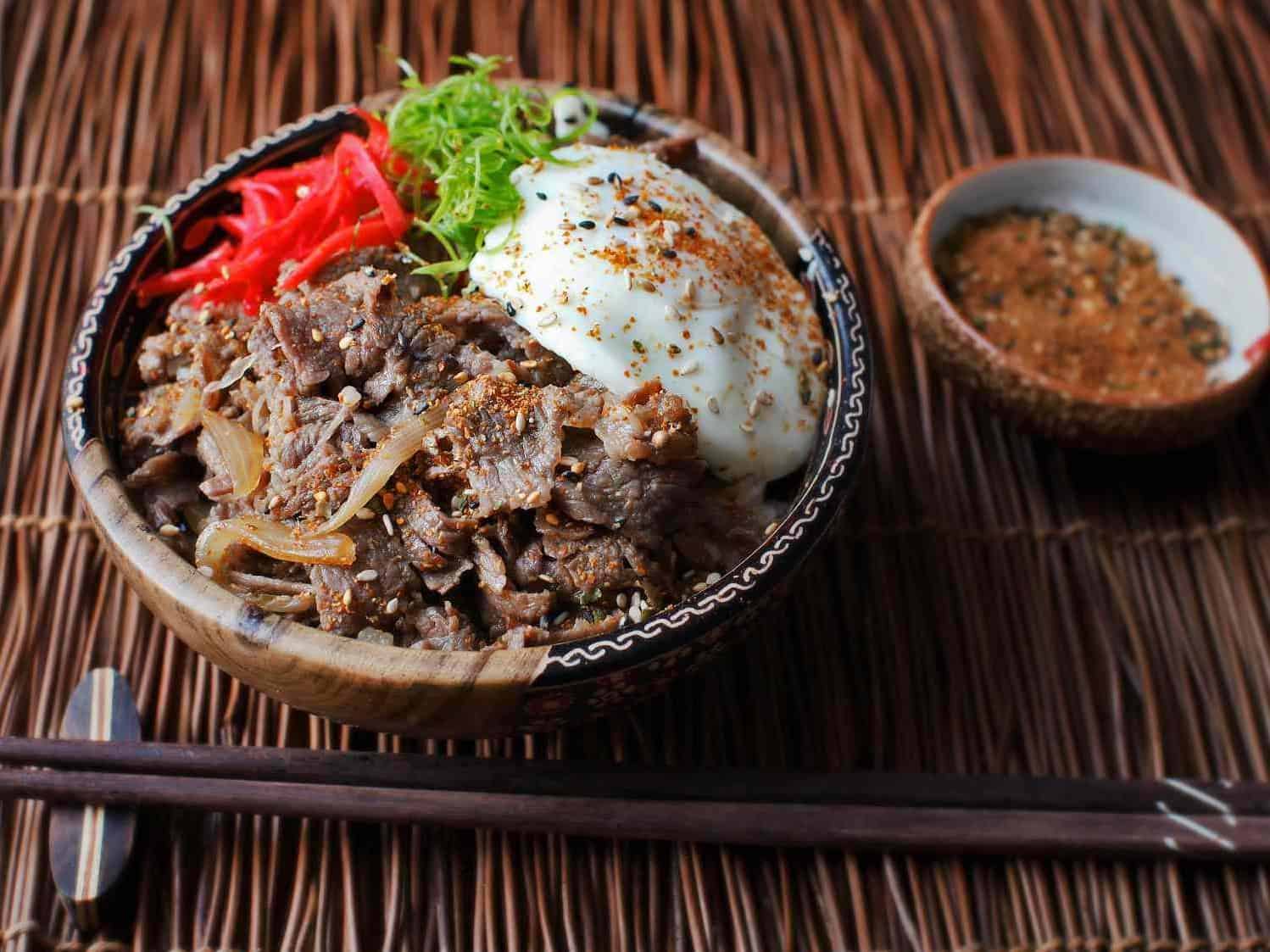
If you’re feeling adventurous, or if you simply don’t have all the ingredients on hand, there are several substitutions and variations you can make to this gyu donburi recipe. Here are a few ideas:
– Beef: Instead of sirloin beef, you can use other cuts of beef such as ribeye, flank steak, or even ground beef. Just make sure to adjust the cooking time accordingly, as some cuts may need more or less time to cook to your liking.
– Vegetarian: For a vegetarian version of this dish, you can substitute the beef with tofu, tempeh, or seitan. You can also use vegetable broth instead of beef broth.
– Sauce: The sauce is what gives this dish its signature flavor, but you can adjust the ratios of soy sauce, mirin, and sugar to your liking. You can also add other seasonings such as garlic, ginger, or chili flakes for some extra kick.
– Rice: While white rice is the traditional choice for gyu donburi, you can also use brown rice or even quinoa for a healthier twist. You can also top the rice with a fried egg for some added protein and texture.
– Toppings: The beauty of gyu donburi is that you can customize it to your liking with different toppings. Some popular options include sliced scallions, pickled ginger, nori seaweed, or even a dollop of wasabi for some heat.
Remember, cooking is all about experimenting and making the recipe your own. Don’t be afraid to try new things and see what works best for you.
Serving and Pairing
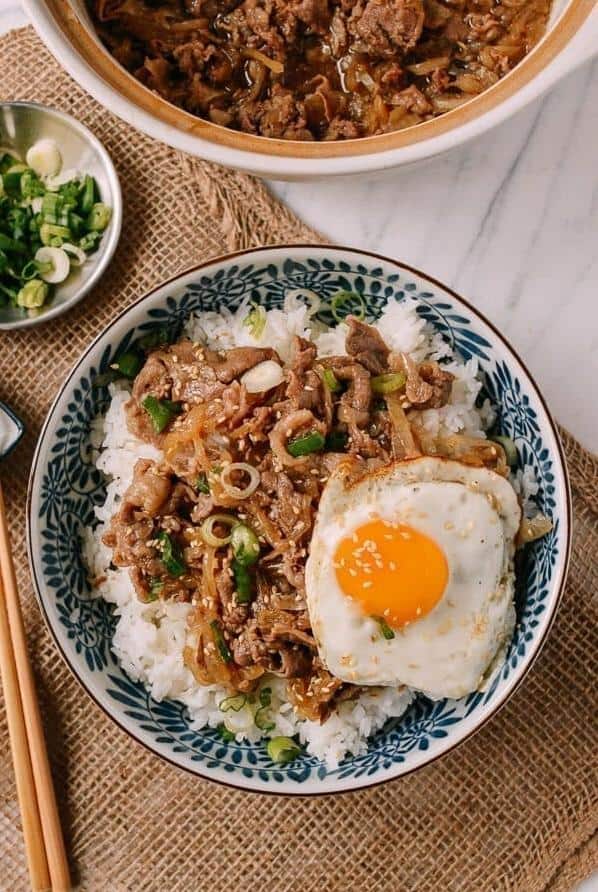
Once you’ve cooked a big pot of Gyu Donburi, it’s time to serve it up and enjoy! This Japanese beef rice bowl is a complete meal in itself, but you can add some side dishes to make it a more substantial feast.
I recommend serving Gyu Donburi with some lightly steamed vegetables such as broccoli, bok choy or snow peas to balance out the savory-sweet flavors in the dish. You could also serve some pickled vegetables on the side, like pickled ginger or cucumber, to add some acidity to the meal.
As for drinks, a good pair for Gyu Donburi is Japanese green tea, which can help cleanse your palate between bites. If you prefer something stronger, a glass of Japanese beer or sake would be a great complement to the dish.
When it comes to presentation, Gyu Donburi is traditionally served in a deep bowl with the rice on the bottom and the beef and onions piled on top. You can garnish it with some chopped green onions or a sprinkle of sesame seeds for a pop of color and flavor.
Overall, Gyu Donburi is a versatile dish that can be enjoyed as a quick and easy meal or dressed up for a more special occasion. With its rich flavors and hearty texture, it’s sure to please any meat lover or Japanese cuisine enthusiast.
Make-Ahead, Storing and Reheating
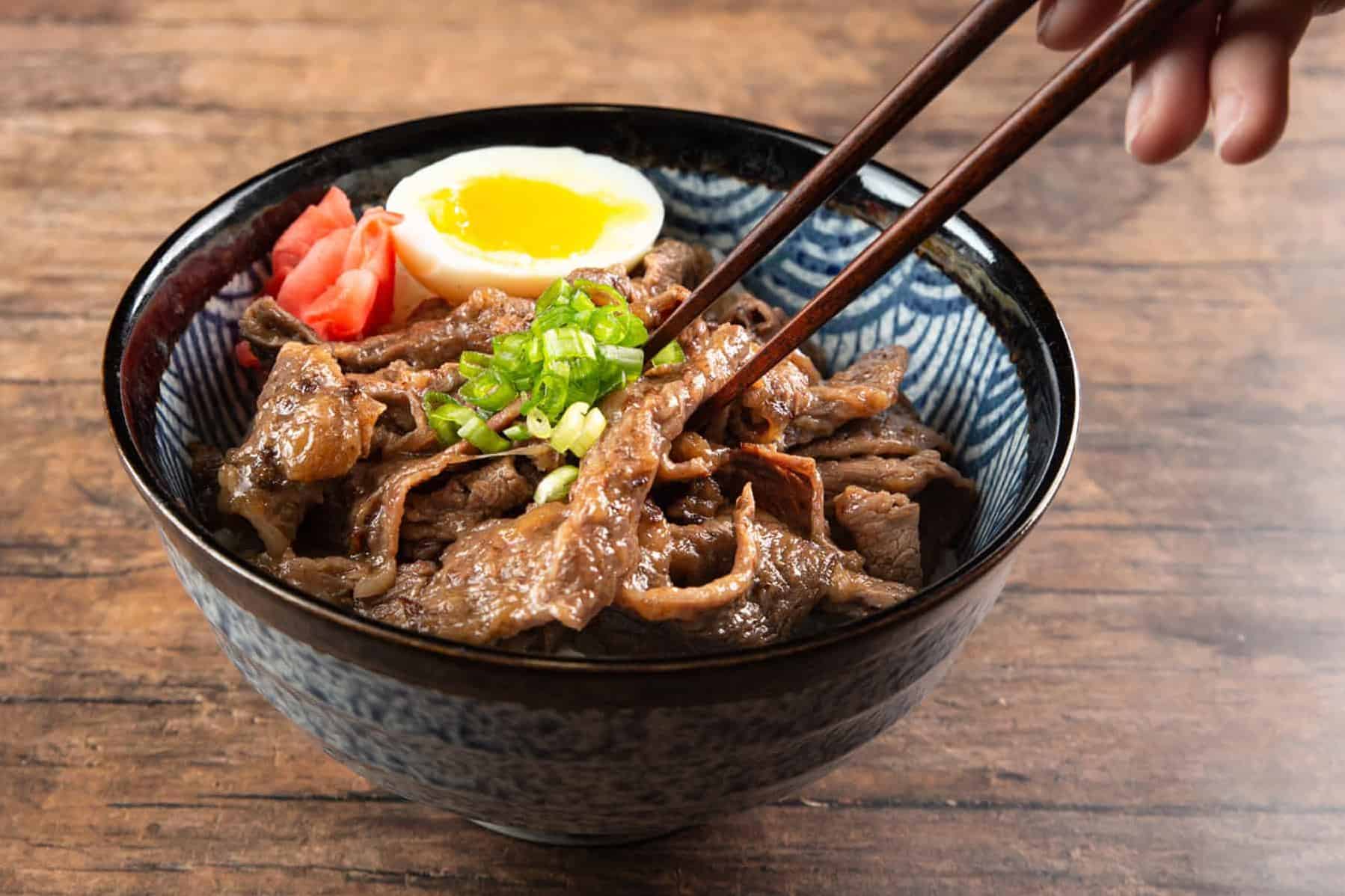
Making the Gyu Donburi recipe ahead of time can save you precious time in the kitchen. You can prepare the beef and onion mixture in advance and store it in the fridge for up to three days. When you’re ready to serve, simply reheat the mixture over medium heat until it’s hot.
If you have leftover Gyu Donburi, you can store it in an airtight container in the fridge for up to three days. When reheating, you may want to add a splash of water or beef broth to help loosen up the mixture. It’s important to reheat the mixture slowly over low heat to prevent the beef from becoming tough.
Alternatively, you can freeze the Gyu Donburi mixture for up to two months. To reheat, simply thaw the mixture overnight in the fridge and then reheat it over medium heat until hot. The texture of the beef may not be as tender after freezing, but it will still be delicious.
One tip for storing and reheating Gyu Donburi is to keep the beef and rice separate until you’re ready to serve. This will prevent the rice from getting soggy and will allow you to reheat the beef mixture more easily.
Overall, the Gyu Donburi recipe is a great dish to make ahead of time and store for later. With a little bit of planning, you can enjoy this savory and sweet Japanese beef rice bowl anytime you want.
Tips for Perfect Results
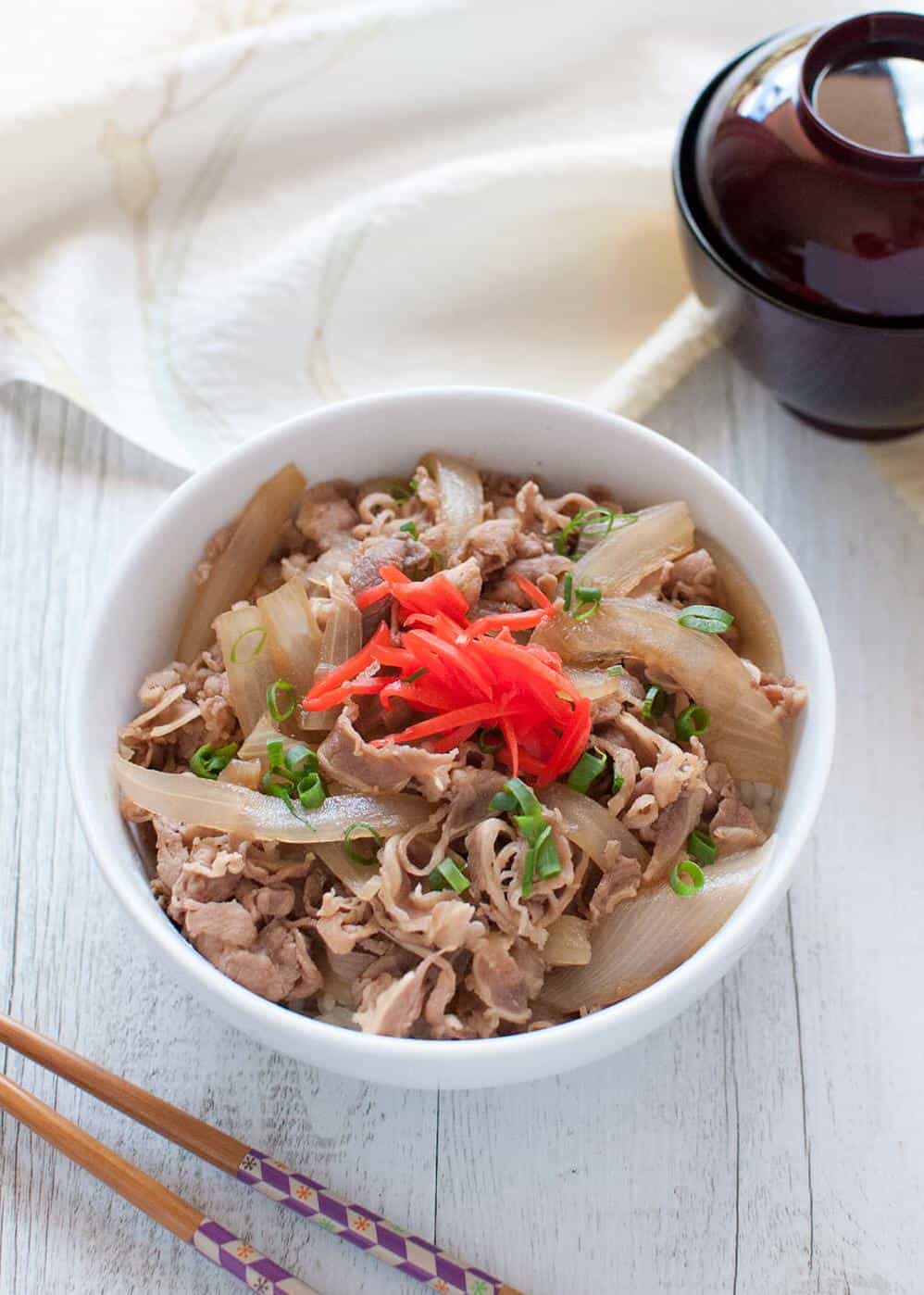
Now that you have all the ingredients ready and the recipe how-to, it’s time to talk about some tips and tricks to ensure the perfect gyu donburi. Here are some helpful tips to make sure that your beef bowl is as delicious as possible.
1. Use high-quality beef
The quality of the beef you use is essential to the success of the dish. Choose sirloin beef or another cut suitable for stir-frying. The meat should be thinly sliced and cut into bite-sized pieces, making it easy to cook and eat. If possible, choose beef that’s been aged for a few days to enhance the flavor.
2. Cook the onions slowly
The onions are an essential part of the dish, and they need to be cooked slowly until they’re perfectly tender and caramelized. This will take about 20 minutes, but it’s worth the wait. The onions will add a sweet and savory flavor to the dish.
3. Don’t overcook the beef
To ensure that the beef stays tender and juicy, don’t overcook it. It should only take a few minutes to cook the beef. Make sure to stir-fry it quickly over high heat, so it doesn’t become tough and chewy.
4. Use low sodium beef broth
Using low sodium beef broth will give you more control over the saltiness of the dish. You can always add more soy sauce if needed, but it’s difficult to reduce the saltiness if you use regular beef broth.
5. Let the rice cool down before serving
When assembling the dish, make sure the rice is slightly cooler than room temperature. This will prevent the hot beef and broth from turning the rice mushy.
6. Garnish with a soft-boiled egg
Garnishing your gyu donburi with a soft-boiled egg is a great way to add richness and texture to the dish. The creamy yolk will blend perfectly with the savory broth and tender beef.
By following these tips, you’ll be able to create a perfect gyu donburi that’s full of flavor and texture. Don’t be afraid to experiment with different variations and substitutions to make it your own. Enjoy!
FAQ
Now that you know how to prepare a delicious Gyu Donburi, you might have some questions about the recipe. Don’t worry, in this section, I’ve compiled a list of frequently asked questions and their answers to give you more clarity and confidence in making this Japanese beef rice bowl. Let’s dive in!
What cut of beef is used in gyudon?
For this dish, thin slices of ribeye or chuck are commonly used. Japanese supermarkets usually have the ideal meat for gyudon, but if that’s not available, any beef meant for Philly cheesesteaks will suffice. Even frozen meat can work well in this recipe.
What is gyudon sauce made of?
Get ready to elevate your dish to the next level with my go-to sauce recipe. This sauce is a perfect marriage of sweet and savory flavors, crafted using a blend of dashi, sake, mirin, soy sauce, and sugar. The beauty of this recipe lies in its simplicity – with just a few ingredients, you can achieve a complex and delicious taste. Trust me, this sauce will become a staple in your culinary arsenal.
What are 5 types of donburi?
In Japanese cuisine, there are several types of don dishes that are popular among food enthusiasts. One of them is the Ikura Don, which consists of a bed of warm, fluffy rice and a generous serving of shiny salmon roe on top. Other don dishes include Katsudon, Oyakodon, Ten Don, Gyudon, Butadon, Kaisendon, and Chukadon. Each of these dishes has its unique taste and texture that makes them stand out from one another.
What is gyudon donburi?
When it comes to Japanese cuisine, Gyudon is a must-try dish. This delectable donburi is a perfect combination of thinly sliced beef and onions, cooked in a delicious dashi broth that is both savory and sweet. The way the beef is sliced allows it to quickly tenderize and release its flavors into the broth.
Bottom Line
In conclusion, the Gyu Donburi recipe is a must-try for anyone who loves Japanese cuisine or is looking to try something new. With its savory sweet taste and tender beef, it is sure to satisfy your taste buds and leave you feeling full and satisfied. Donburi bowls are a popular dish in Japan and are enjoyed by people of all ages. This recipe is easy to follow and can be made with ingredients that are readily available in most grocery stores. Whether you’re a seasoned chef or a beginner, you can prepare this dish with ease and impress your friends and family with your culinary skills. So why not give it a try? You won’t be disappointed!
Gyu Donburi Recipe
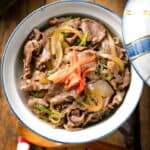
If I could only eat one food for the rest of my life, this would be it. It is a Japanese dish, essentially onions and beef simmered in a sweet beef stock served over rice. The original Japanese recipe calls for dashi instead of beef stock. Dashi is a simple Japanese stock made from dried bonito flakes, a fish, and kelp. I find the beef stock version a bit more to my liking. Sake is a Japanese rice wine, available in any liquor store. Mirin is a sweet rice wine, Kikkoman makes an acceptable version called Aji-Mirin, available in most supermarkets.
- 2 cups white rice, cooked
- 1 1/4 cups low sodium beef broth
- 2 tablespoons sake
- 3 tablespoons mirin
- 1 1/2 tablespoons sugar
- 1 medium onion, sliced very thin
- 7 ounces sirloin beef, sliced as thin as possible
- 3 tablespoons soy sauce
- 3 eggs, lightly beaten
- Combine the beef stock, sake and mirin in a medium saucepan, bring to a boil over medium heat. Add the sugar, stir until it dissolves. Reduce the heat to low and cook 5 minutes.
- Add the onion, cook until soft, about 5 minutes. Add the beef, cook for 2 minutes. Add soy sauce and cook an additional 3 minutes.
- Pour the eggs over the top, do not stir! Cover pan with a lid and let cook 2 minutes.
- Serve over cooked rice.
[custom-related-posts title=”Recommended Recipes Just For You” none_text=”None found” order_by=”date” order=”ASC”]
